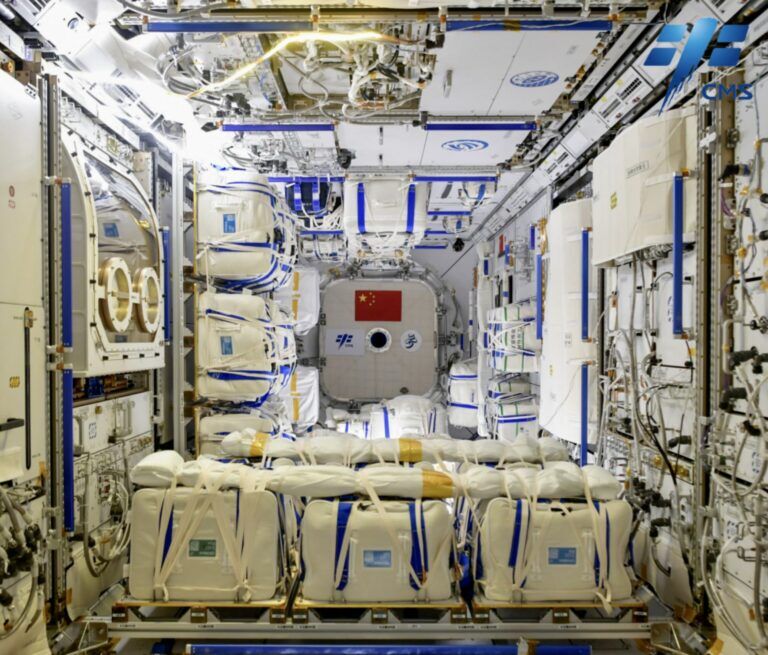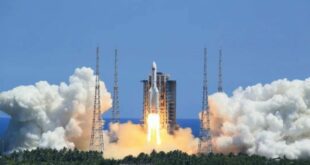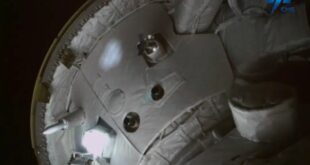
Edinburgh, 2 November 2022. – Mengtian (“dreaming of the heavens”), the third module of China’s Tiangong space station has successfully docked with the previously launched two modules, completing its construction. The Long March 5B rocket that deployed the module is currently on its way back Earth, with an estimated uncontrolled re-entry this Saturday.
Mengtian is an experiment module that will complete the space station’s T-shaped arrangement with the Tianhe core module and the Wentian experiment module. The new module is 17.9 m long, with a diameter of 4.2 m and weighs about 22 tons. It is designed for science experiments in fluid physics, combustion, materials science and space technologies.
Mengtian has a payload airlock as well, allowing a 5.2-meter-long robotic arm to install science experiments on payload adapters outside the module. In addition, an on-orbit release mechanism can deploy spacecraft of up to 100 kg into orbit from the module.
There are two more launches planned to conclude the construction and testing of Tiangong. A cargo spacecraft will launch early this month to carry supplies for the upcoming Shenzhou-15 crewed mission. Later this year, the Shenzhou-15 mission will mark China’s first crew handover, and the start of Tiangong’s operational phase.
China is planning to add the Xuntian optical module to the space station in the next two years. Xuntian will be a co-orbiting, Hubble-class space survey telescope with a two-meter aperture and 2.5-gigapixel camera. The module will survey around 40% of the sky and will also be capable of docking with Tiangong for maintenance purposes.





